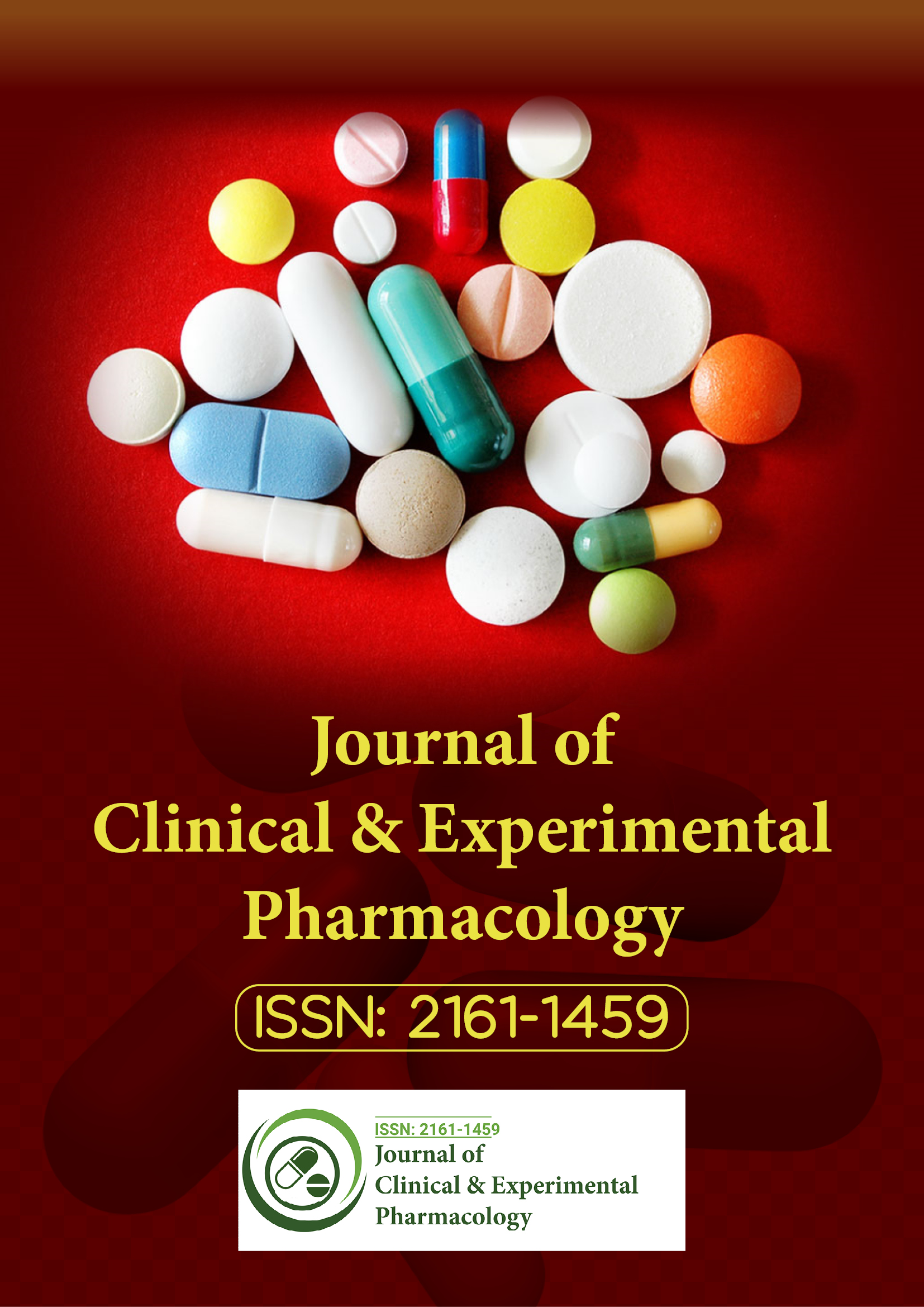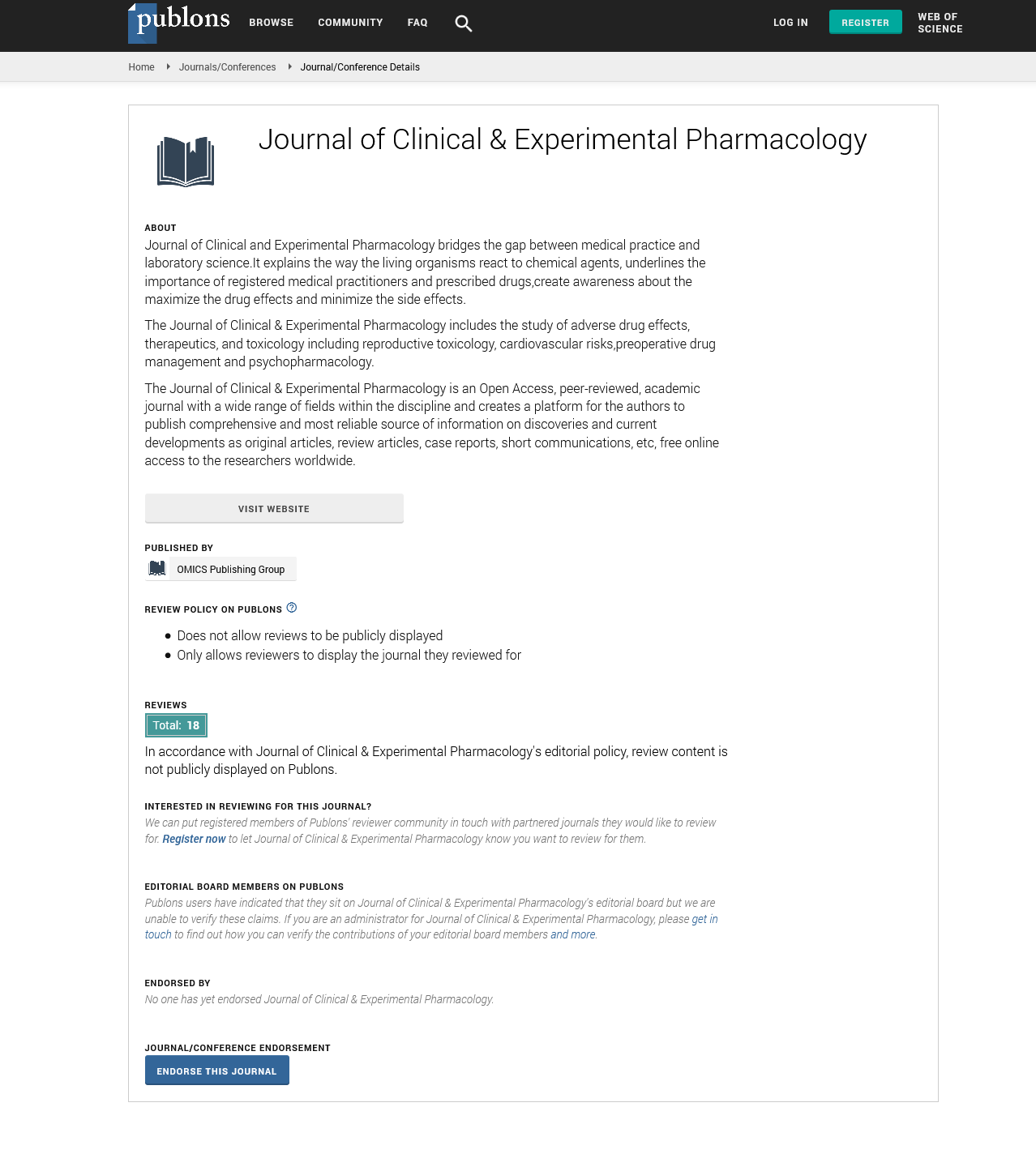Indexed In
- Open J Gate
- Genamics JournalSeek
- China National Knowledge Infrastructure (CNKI)
- Ulrich's Periodicals Directory
- RefSeek
- Hamdard University
- EBSCO A-Z
- OCLC- WorldCat
- Publons
- Google Scholar
Useful Links
Share This Page
Journal Flyer

Open Access Journals
- Agri and Aquaculture
- Biochemistry
- Bioinformatics & Systems Biology
- Business & Management
- Chemistry
- Clinical Sciences
- Engineering
- Food & Nutrition
- General Science
- Genetics & Molecular Biology
- Immunology & Microbiology
- Medical Sciences
- Neuroscience & Psychology
- Nursing & Health Care
- Pharmaceutical Sciences
Analgesic and side effects in rodents of Ph?1? a spider venom toxin calcium channel blocker
World Congress on Pharmacology
July 20-22, 2015 Brisbane, Australia
Marcus Vinicius Gomez, C�lio Jos� de Castro Jr, Alessandra Hubner de Souza, Flavia Karine Rigo, Danuza Montijo Diniz and Juliano Ferreira
Posters-Accepted Abstracts: Clin Exp Pharmacol
Abstract:
Calcium influx through neuronal voltage-sensitive calcium channels (VSCCs) mediates nociceptive information in the spinal dorsal horn. Ph?1? is a peptide purified from the venom of the Brazilian armed spider Phoneutria nigriventer that reversibly and non-specifically inhibited high-voltage-activated Ca2+ channels, namely L-(Ca v 1.2), N-(Ca v 2.2), P/Q-(Ca v 2.1), and R-(Ca v 2.3) type, with varying potency (N > R > P/Q > L) in heterologous and native systems. We compared the antinociceptive and adverse effects induced by Ph?1? and ?-conotoxin MVIIA, a specific N-type calcium channel blocker, in rodent models of pain. Spinally administered Ph?1? showed higher e?cacy and long-lasting analgesia than ?-conotoxin MVIIA. Ph?1? had a therapeutic index wider (16) than ?- conotoxin MVIIA (4) also inducing less side effects than the conus toxin. Both toxins reversed an established pain but ?-conotoxin is less potent to produce such effect than Ph?1?. VSCCs in the spinal cord have an importantrole modulating the release of key pro-nociceptive neurotransmitters, glutamate. Both toxins were able to reduce glutamate from cerebro spinal fluid but Ph?1? presented potency about 3 times higher than ?-conotoxin MVIIA to block the evoked release of glutamate. We also investigated the analgesic effect of Ph?1? in a model of cancer pain induced by inoculation of melanoma B16F10 into mice with or without tolerance to morphine analgesia. Ph?1? was capable of controlling cancer-related pain even in mice tolerant to morphine antinociception inhibition and, more important, was also able to partially restore morphine analgesia in such animals. Ph?1? is a ?-toxin with high therapeutic index and a broader action on calcium channels. It shows analgesic effect in several rodents? models of pain suggesting that this toxin has the potential to be used in clinical setting as a drug in the control of persistent pathological pain.

